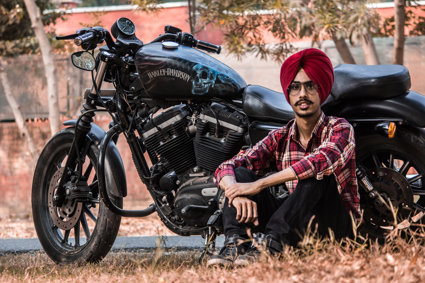
From Bollywood to a billion
This section looks at the unique characteristics of India’s cities and states
Key questions
What are India’s diverse states like?
How can different groups represent, use or portray this diversity?
There are 28 states in India: Andhra Pradesh, Arunachal Pradesh, Assam, Bihar, Chhattisgarh, Goa, Gujarat, Haryana, Himachal Pradesh, Jammu and Kashmir, Jharkhand, Karnataka, Kerala, Madhya Pradesh, Maharashtra, Manipur, Meghalaya, Mizoram, Nagaland, Orissa, Punjab, Rajasthan, Sikkim, Tamil Nadu, Tripura, Uttar Pradesh, Uttarakhand, West Bengal.
There are seven centrally administered Union Territories: Andaman and Nicobar Islands, Chandigarh, Dadra and Nagar Haveli, Daman and Diu, Delhi, Lakshadweep, Puducherry.
India's current population is 1,148,879,000.
There are many diverse ethnic groups: Indo-Ayran 72% (mainly north and central India), Dravidian 25% (mainly south India), Mongoloid (mainkly north-east India) and other 3% (2000). India’s tribal people are known as the Adivasis. Most of them live in the north-east.
Religion: Hindu 80.5%, Muslim 13.4%, Christian 2.3%, Sikh 1.9%, others (including Buddhist) 0.1% (2001 census). Cows are sacred to Hindus. They can be used for work but you can’t eat them.
English is the main language of commerce and politics but in addition there are 17 major languages in India and 844 dialects including Hindi (national language), Bengali, Telugu, Marathi, Tamil, Urdu, Gujarati, Malayalam, Kannada, Oriya, Punjabi, Assamese, Kashmiri, Sindhi and Sanskrit.
There are also big differences between those who live in rural/urban areas, between people of different castes, between the rich and the poor and between the lives of men and women.
India is the largest producer of feature films in the world. More films are made in India (‘Bollywood’) than in the USA (‘Hollywood’).
In 2002 2.38 million tourists visited India earning the country $3,041,999,872.
In 2006 India’s economic output rose by 8.5%, second only to China (10.5%) India's economic growth has created wealth for many in India's cities. It's given birth to a consuming class. But that wealth has yet to trickle down to Indian villages where over sixty percent of Indians live.
Millions of India's farmers still live on less than two dollars a day. This growing income inequality is fuelling resentment, giving rise to a fury that has manifested itself in demonstrations and protests across India
Links
Main Activity
India is one of the world’s most diverse countries.
Apart from Hindi and English, there are 16 official languages. Major religions include Hinduism, Islam, Christianity, Sikhism, Buddhism and Jainism.
Open the Data bank. This lists words representing the diversity of India.
Search the links above and other websites of your choice to find facts and images to match each word.
Now, look at the list of people below and decide which piece of information they would use to promote their cause:
-
An IT consultant wanting to attract business to India
-
A slum citizen in need of government support
-
A hotel manager in need of foreign trade
-
A climatologist worried about global warming
-
A spiritual guru wanting to attract pilgrims
-
An NGO worker wanting to highlight the gap in wealth
-
Think of one other person and repeat.
The government of India believes that India’s diversity is its strength. Do you agree or disagree with this view?
Plenary
Bangalore is planning to change its name to its Kannada version, Bengalooru.
Kannada is the main language of Karnataka State.
As a class, write ‘Bangalore’ in the middle of a page.
Brainstorm questions that come to mind and add them around it.
Make links between the questions and refer back to them in the next section, which looks at India's global cities and includes a case study on Bangalore.
File nameFiles
File type
Size
Download